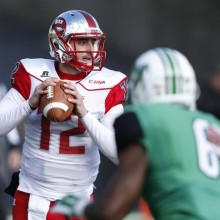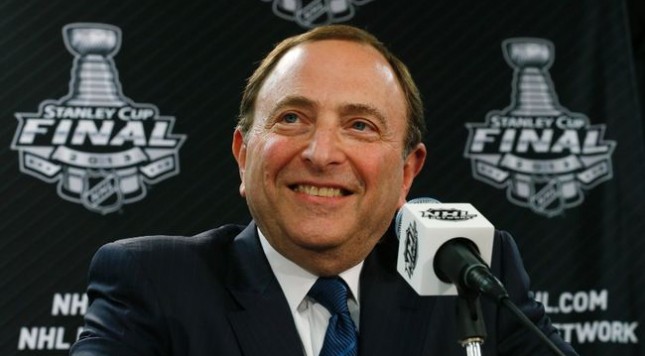Earlier in the year I was asked by a reader about the Canadian Dollar’s effect on the salary cap in the NHL, I decided it was probably a good time to dust off my quick explanation on why a falling Canadian Dollar is bad news for the salary cap and those teams that are really in a bind if the cap does not increase as much as expected. The short answer is of course that the Canadian teams who do a significant job of economically propping up the league pay their bills in American Dollars but collect revenue in Canadian Dollars.
The long answer has many important points that I will try to cover so that none of us (me included) feel like we a degree in economics or fall asleep before finishing reading.
First it is important to understand how the salary cap itself works. The Salary Cap takes anything that is referred to as Hockey Related Revenue (HRR) and splits it evenly between the players and owners. 50% of the hockey related revenue / 30 teams basically determines the cap. There is obviously other factors (escrow) but the idea remains the same.
Second it is important to understand things that are included in hockey related revenue and they include but are not limited to national TV deals, outdoor game revenue, merchandise, revenue generated by individual franchises (tickets, regional TV deals etc..).
So now that we have an basic understanding of what hockey related revenue is we need to understand how it is affected by the Canadian Dollar. Without getting into super detail again the Canadian Dollar’s value is heavily linked to the price of oil so with oil tumbling downwards it has taken the value of our dollar with it. But how does that effect the NHL after all there are 23 teams in the USA compared to just 7 in Canada.
The 7 Canadian teams have accounted for up to 35% of HRR this figure to my understanding does not include the massive Canadian TV rights deal that they signed with Rogers last year. This is obviously a disproportionate amount compared to their American counter parts, again the Canadian teams collect their revenue in Canadian Dollars and paying things like player salaries in US dollars which means that with the Canadian Dollar being worth less their bottom line progressively shrinks as they pay their bills. The Canadian teams don’t have a ton of options to recoup this lost revenue, all 7 teams are already in the top 14 when it comes to the average ticket prices and with the economy down especially in Western Canada where the oil companies and business that rely on their business (like my own) are laying people off or ramping down production making a massive hike in ticket prices is not the option. Although they will continue to progressively rise. So with the Canadian teams putting less of their dis-proportioned contribution into the overall pot it causes the overall revenue to be down bringing down the salary cap with it.
As an aside this is according to Forbes this is how the Canadian teams ranked for average ticket price last year which when you tie in merchandise explains how the Canadian teams contribute so much to the revenue pie. Canadians will pay top dollar to watch their favourite team finish last. This is good though because if the dollar loses value on this scale for an extended period of time it will hamper their ability to spend to the cap and compete for and pay players especially if your an Ottawa or Winnipeg.
- Toronto Maple Leafs, $373.50
- Vancouver Canucks, $282.58
- Edmonton Oilers, $259.83
- Calgary Flames, $241.18
- Montreal Canadiens, $218.30
- Ottawa Senators, $174.32
- Winnipeg Jets, $156.64
It is important to note that the massive Canadian TV deal is not affected by the Canadian Dollar’s fall when it comes to its contribution to the cap because it is paid in US dollars, and Rogers shouldn’t be worse for wear on the deal. The implications of a stagnated or even decrease in the Salary Cap are pretty obvious, teams are going to have to make interesting decisions when it comes to player personnel, the Islanders this year a great example of a team that was the direct beneficiary of another teams cap woes.
As of the GM meetings Bettman said the cap was expected to rise to $71 Mil. although that would include the players using taking another big hit in escrow to fulfill that increase, Many GM’s said they might wait to see the actual final number than using the estimate.




















